An explanation of what I'm doing here can be found in my introduction post.
Last time we looked at the Saturn in March '96 with Winning Post, Revolution X, D, Criticom, Battle Arena Toshinden Remix, Magic Carpet, Night Warriors: Darkstalkers' Revenge, and Congo: The Movie: The Lost City of Zinj.
Last week we looked at the unmitigated horror that is the 3DO catalog in 1994 with Total Eclipse, Microcosm, The Horde, Iron Angel of the Apocalypse, and MegaRace.
Finally, last we were with the Playstation we considered the late March '96 hits of Wing Commander III: Heart of the Tiger, Road & Track Presents: The Need for Speed, Extreme Pinball, and Resident Evil.
Now, we're looking at the first four games of April with Bottom of the 9th, PO'ed, Williams Arcade's Greatest Hits, and Return Fire.
**This post is also featured on my site, fifthgengaming.blog, and can be found here.**
----------------------------------------------------------------------------------------------------
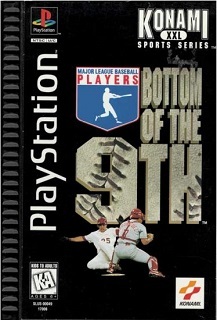
Bottom of the 9th
Developer: Konami
Publisher: Konami
Release Date: 4/4/1996
Time to Completely Enraged: 28 Minutes
Somehow this is only the second Baseball game on the PS1, and the third unique one that we've yet looked at. It's also another Konami sports title, so you know it'll be a banger. By that I mean it made me rage quit in less than 30 minutes, which is an achievement for a sports sim.
Starting with the positives, this is far and away the most technically competent and mechanically complete Baseball game up to this point. While it still looks fugly by our standards, it's a damn sight better than Bases Loaded '96 or World Series Baseball. It also gets the audio correct, with just enough announcer and stadium noise to bring in some atmosphere. The controls made much more sense here than in those other games, and it had more in the way of gameplay mechanics without losing the standard game modes. All of that is admirable, and I suppose Konami deserves some amount of credit as such.
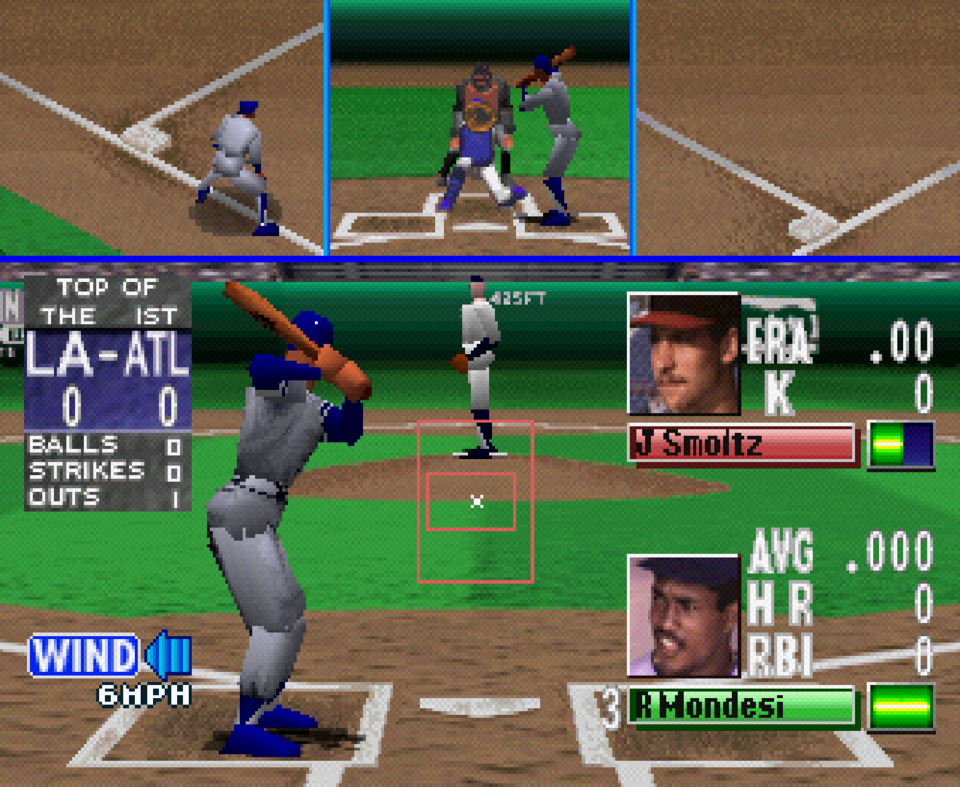
Now here's why this piece of shit should go fuck itself: attempting to play Bottom of the 9th is an exercise in constant frustration. The primary gameplay gimmick going on here is the novel batting system, which doesn't have a spiffy marketing name, so I assume Konami ended up being ashamed of it. You have a batting zone like you would see in modern Baseball games, but there is a second box that indicates a swing zone. When a ball is pitched, a small crosshair will appear for about a second at a point somewhere inside or outside the batting zone, you need to use the d-pad to line up your little hit box to cover that point and then hit the Cross button to swing at the right time. I like that idea in theory, and it reminds me of the batting minigame in Yakuza 5, which I enjoyed. The problem here is that the timing and bounds for this mechanic are way too tight. You're given the same amount of reaction time with the same timing window as other contemporary Baseball games, but with twice as many inputs. The batting is barely playable, with a vertical and immediate learning curve that requires multiple hours of practice to overcome.
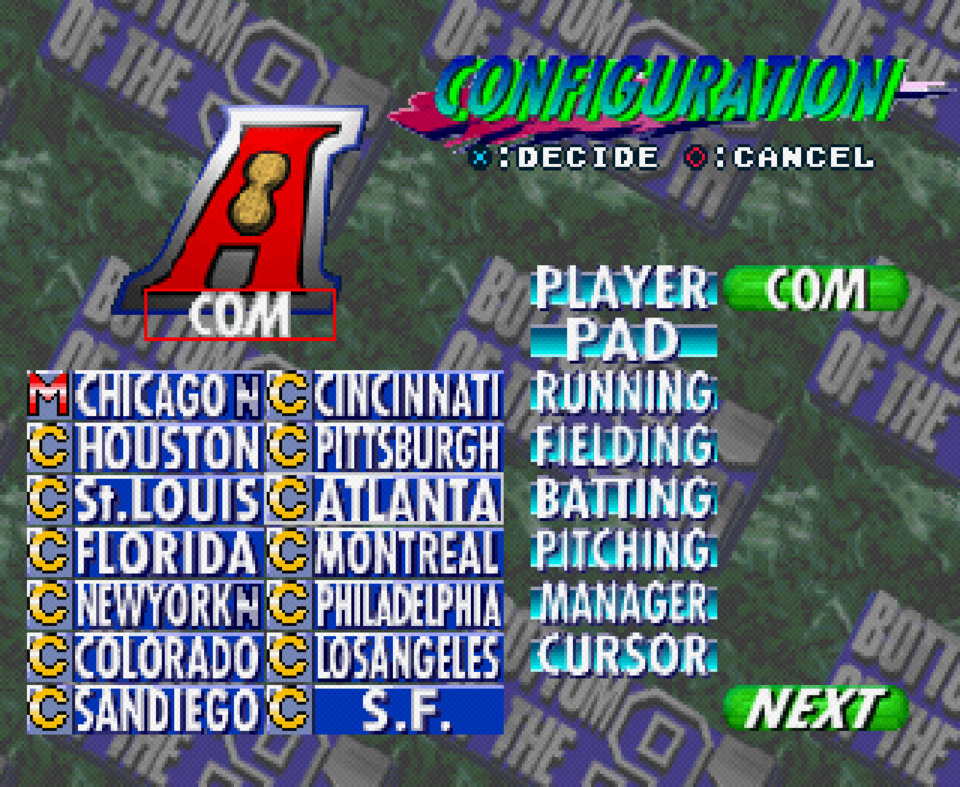
That poorly handled mechanic is further exacerbated by the careless AI programming. Even though the controls are functional, they still tend towards sluggishness in some cases. There's something going on when throwing the ball to base that causes a second or so lag between the button press and the throw, which is an issue that compounds on itself given the AI's .800 batting average. That insane batting skill is common in this genre, as the timing-only batting mechanic seen everywhere else can allow players to reach near 1.000 batting average with a little practice and the AI needs to at least try to keep up. The effectiveness that the AI displays with this particular batting mechanic feels like cheating. It also goes without saying that outfield gameplay still sucks ass, as was the style of the time. That makes it even more insulting when the AI consistently catches fly balls and rarely lets balls get away from it. Also, what really got me is the fact that you can somehow miss when throwing to base, so the ball can go sailing past the baseman with no discernable rhyme or reason; this of course does not happen to the AI.
All of this taken together makes the experience feel prohibitively unfair, which is infuriating. It's been a while since I've rage quit from one of these games, but here we are. It's a shame for such an otherwise technically competent game to suck so much ass. At this point, I'm thinking that we're all lucky Konami stopped making sports games.
Oh, and the menus are incredibly ugly. Rest in Piss, Bottom of the 9th.
----------------------------------------------------------------------------------------------------

PO'ed
Developer: Any Channel
Publisher: Accolade
Release Date: 4/10/1996
Time to More Bored Than Pissed: 50 Minutes
At what age do you need to be for 'pissed off' to be a naughty thing to say? Whatever your answer is, that was likely the target demographic for this game. PO'ed is an FPS Doom-clone that originally came out on the 3DO in '95. That's right, there's no escaping the 3DO. The differentiators here are the "comedy" and the uh, inventive level design. This game can also be added to the list of Doom-clones with jump buttons, but we'll get to that.
The thin premise is unfortunately relevant to the gameplay, so let's touch on it first. You play as a cook for a space PMC who signed on for a contract that has gone sideways. You're the sole survivor after your spaceship gets overrun by weird butthole aliens, and you need to fight your way out. This matters because your starting melee weapon is a skillet and the first weapon you pick up are kitchen knives that you throw like kunai. I think that was supposed to count as quirky humor. The premise doesn't really inform much else going on here. If anything, the movement tech is the main gimmick we need to grapple with.
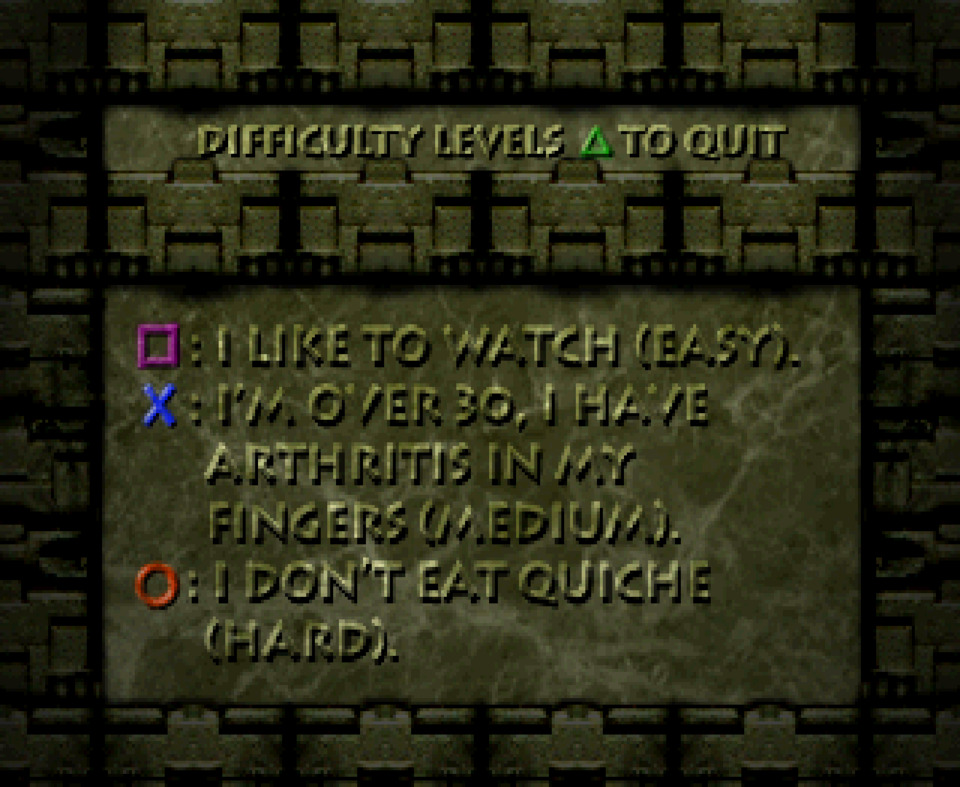
PO'ed has platforming in it. The default jump button doesn't do very much, but when sprinting you jump higher and farther, leading to exactly the kind of level design you expect. This would be fine if that base movement was any good. There's weird character acceleration going on when moving and you tend to slide a bit after letting off the buttons. That sliding gets so much worse when sprinting. This all combines into some Mega Man ice level tier bullshit, where you need to make running jumps to relatively small platforms but end up sliding off after landing. There's also fall damage in this game, so have fun with that. I've read that there's a jetpack at some point, which could solve some of those problems, but I didn't get to it.
The wacked out movement could be forgiven if the shooting were any good, but I think you know where I'm going with this. While the weapons are fine for what they are, the hitboxes and kinda wonky and the melee distance feels weird and inconsistent. The biggest issue here, though, is the fact that you get knocked back from enemy attacks, and the skittery little shits can circle around you faster than your turning speed. It's easy to get pushed off ledges and ladders or through teleporters. What's worse is that the dead enemy sprites have physical hitboxes that your character will automatically step on top of, which can heighten disorientation or make it impossible to hit otherwise accessible switches. In fact, the auto-climbing generally feels bad. Also, all the ramps are slippery for some reason, which really sucks.
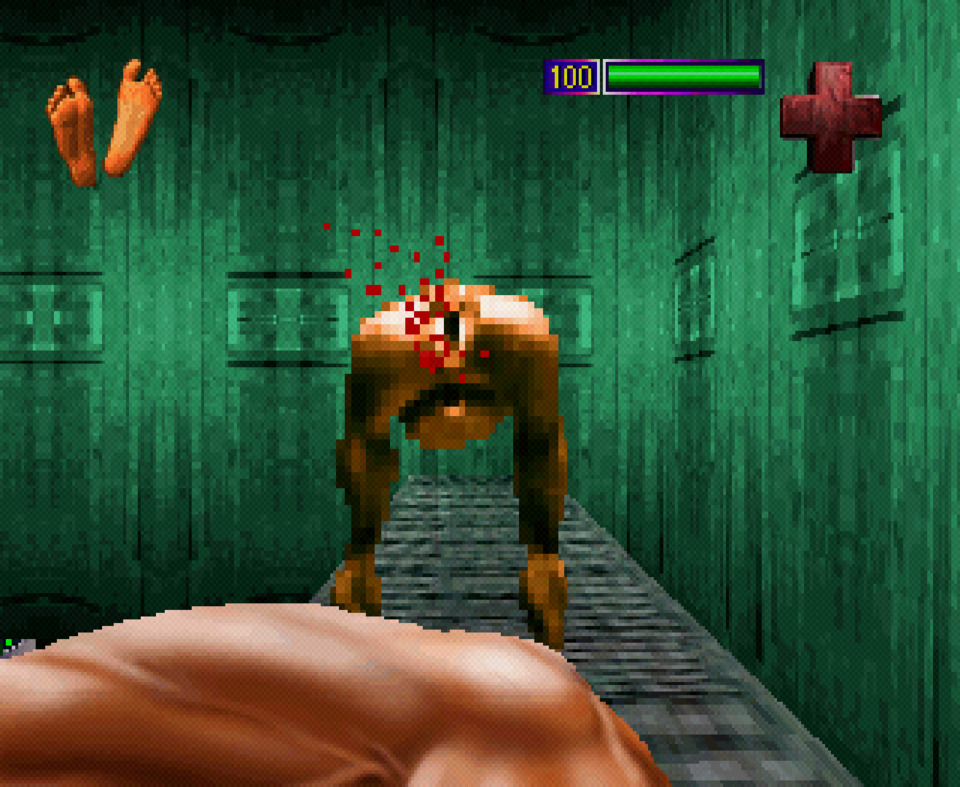
So, interacting with this game is a pain, but it's otherwise normal, right? Wrong. Apparently, the designers on this thing thought that the level design in Doom was boring and wanted to spice up their levels. That resulted in each level featuring a lot of verticality and the occasional wide-open space with uneven platforms. None of this works well, because up/down aiming hadn't been fully invented in '95. The levels represent the kind of ratfuckery that was common with amateur FPS map design in the 90's. Everyone saw the way Doom handled secret rooms and thought it didn't go far enough. An example would serve better than a description. In one of the levels, you are put into a vertical shaft with platforms offset on multiple levels and a ladder that goes between them. There's a double switch box at the bottom which activates two teleporters a couple of levels up. When you go into those teleporters, they take you to two distinct but identical side shafts that are only two levels tall. The critical path is completely unapparent. Turns out, one of those side shafts has a false wall that you can walk through to a dark spiral stair which progresses the level. There's no way to know that's there without faceplanting into every wall and dicking around the level, which is frustrating to move around, for some indeterminate amount of time. We know now that it's bad to hide the level exit behind hidden walls with no signposting, and we could be tempted to cut designers in the 90's some slack, but no, plenty of people knew better back then. The level design in this game is just bad.
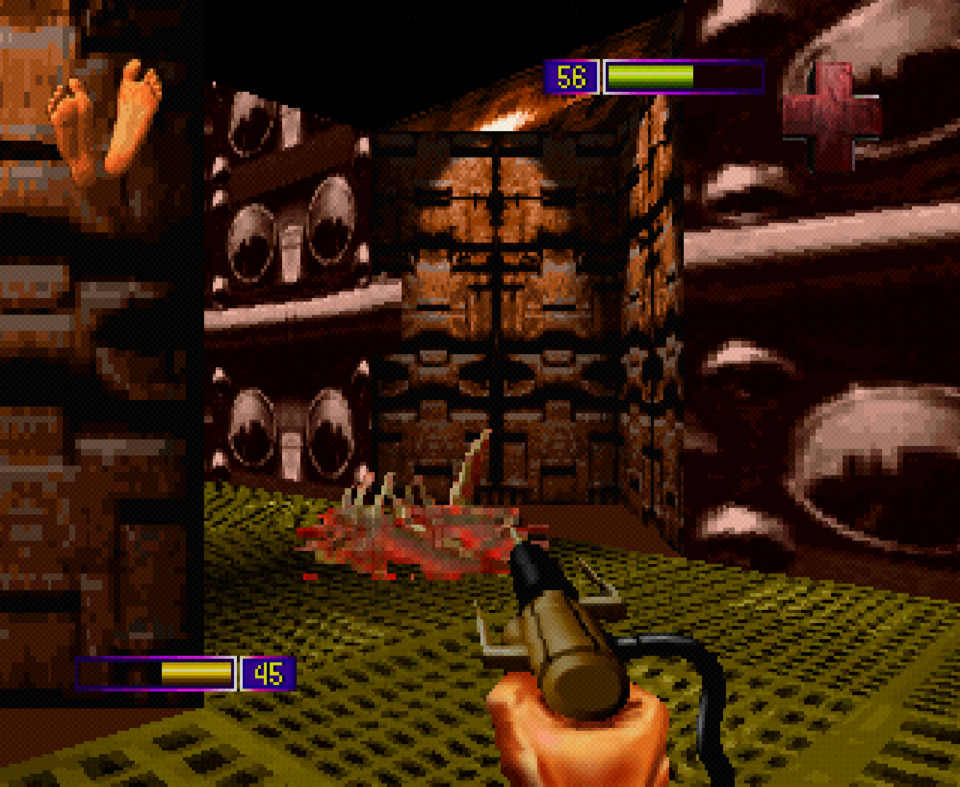
The sound design is also mediocre-to-bad and there is some extreme texture warping going on when you get close to walls. It's the most notable I've seen from a PS1 game so far, to the point where it oddly almost triggered motion sickness for me. Not that it looks particularly great anyway. The whole presentation is meh.
Apparently PO'ed is the only notable release from this developer, and they thankfully didn't last long after this time. The problems with this game seem to stem more from bad design choices than technical ineptitude. Yet, the most confounding thing about this game is how well received it was when it came out. It was regarded as one of the best 3DO games, which I know is a low bar, but even the PS1 port reviewed well. Heck, the other retro reviews I've seen also go very easy on this thing, which is bewildering. I see myself as a Shooter guy, so I don't know if my standards are too high or if I'm a poser. Oh well, there's no reason to dwell further on this game.
----------------------------------------------------------------------------------------------------
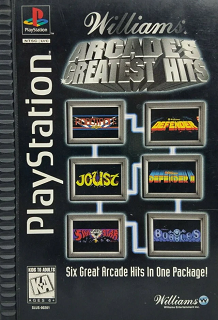
Williams Arcade's Greatest Hits
Developer: Digital Eclipse
Publisher: Williams
Release Date: 4/10/1996
Time to Seeing Everything: 90 Minutes
Now it's time for our first real arcade compilation; I'm not counting The Raiden Project because I don't feel like it. This is also, coincidently enough, one of the first Digital Eclipse arcade collections, which automatically makes this thing special as far as I'm concerned. I don't know as much about these guys and their weird history as I feel like I should, but I know enough to recognize them as the emulation guys. That impression is reinforced here, as the six emulated early 80's arcade games on offer are better emulated than I would have expected from a collection on the PS1.
Williams is also a developer that I knew nothing about before going to this thing, but I now feel well informed about them, their style, and their goings on in the early 80's after spending less than two hours with this thing. Mission accomplished, I guess. Getting down to it, this is an arcade accurate collection containing Defender, Defender II, Joust, Robotron 2084, Bubbles, and Sinistar. Also, for each game there is a large chunk of text describing their development and reception and several short interview clips with the developers for all except Bubbles. For those keeping track, the interviewees are Eugene Jarvis, Larry DeMar, John Newcomer, and R. J. Mical.
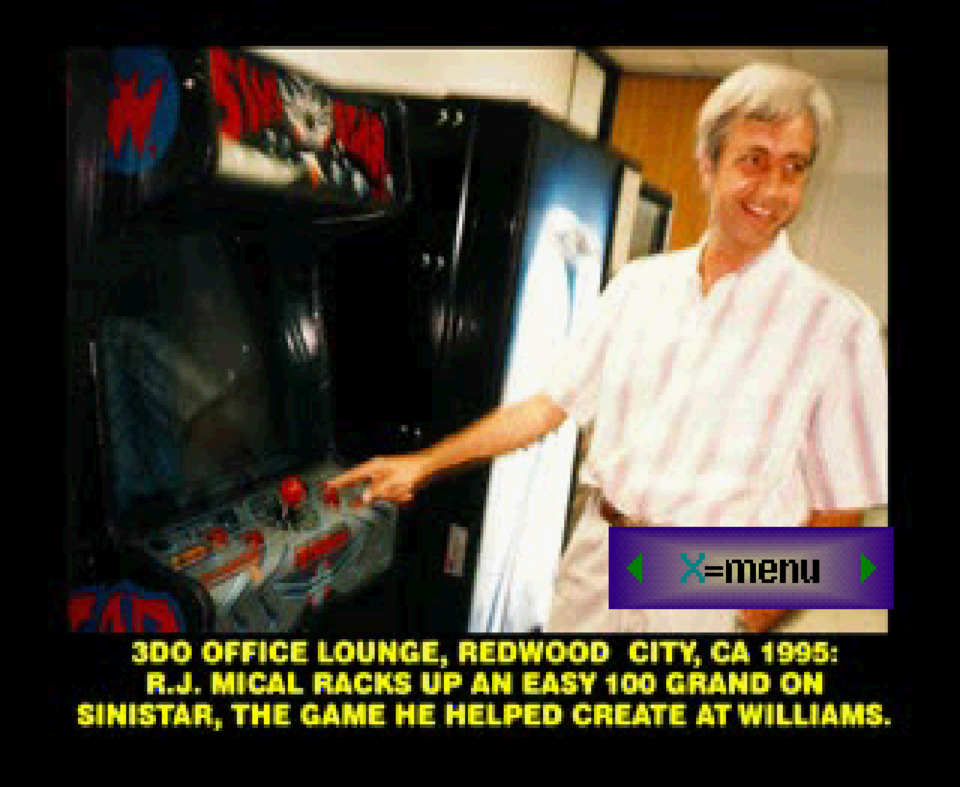
The games themselves are what they are. The video game industry in the early 80's was a wild west where ten guys in a garage could stand up a new arcade game in a few weeks and get cabinets manufactured. Being a very young industry and creative medium while also navigating rapidly developing tech, IP was kind of just a vibe. In 1980, arcade developers were debuting their games at conventions designed to accommodate electromechanical amusements like pinball or Skee-Ball or some shit. Williams was, and I guess still is, a prominent pinball manufacturer who got in on the video gaming craze after that Pong thing got big. The company didn't seem to take it that seriously until the end of the 70's, when they put some real money into spinning up a substantial video game division and hired a bunch of weird young dudes. As the story goes, that misfit dream team worked around the clock for years to pump out the aforementioned hit arcade games, five of which are recognizable to this day.
Stuff like Defender, Robotron, and Joust were innovative and well made for the standards of that time, and this compilation is a celebration of that fact as much as anything else. The thing is, if we're being honest, the damn things aren't any fun in this day and age. I'm not entirely sure if they would have been fun even by the standards of 1996. They're very much of their time in that they have very simple concepts, demanding controls, and antagonistic difficulty. The text for one of the games mentions that the design standards back then required the average play time for a normal player to be under three minutes. Arcade games were supposed to kill the player as fast as possible, while indicating a narrow path for improvement. If you get the balance right, kids will obsessively put quarters into the machine to chase high scores. By the 90's, arcade standards for single-player games had evolved to the point of providing experiences with beginnings and endings where players paid for continues. As we've seen, those games also liked killing players as much as possible, seeking a balance between teasing progression and getting paid. I'm gonna go out on a limb and say that the balance was better in the 90's than the early 80's.
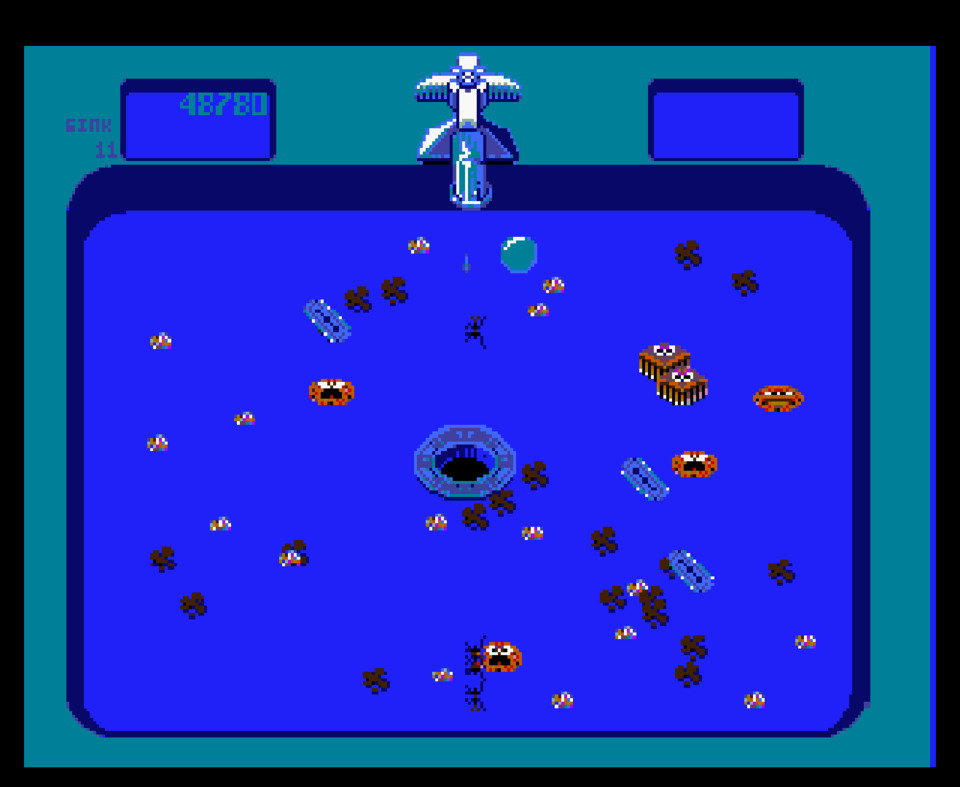
My opinions on historic arcade design will develop more the further we get. Regardless, the interviewees and whoever wrote the text here were of the opinion that games were better Back In The Day, as old farts are wont to do in any era. I don't have much else to add, other than restating the obvious that Eugene Jarvis seems like a weird guy. It's nice to see that Digital Eclipse has been big on documentary work on old games since the beginning.
----------------------------------------------------------------------------------------------------

Return Fire
Developer: Silent Software Inc.
Publisher: Time Warner Interactive
Release Date: 4/12/1996
Time to WHAT DO YOU MEAN THIS ISN'T AN AMIGA GAME: 45 Minutes
This is the most nothing game that I had somehow previously heard of. What we got here is a top-down action game where you meticulously blast through enemy bases and capture their flag. It looks like a 16-bit game and has nothing more going on than what you see on the surface. This is to such an extent that I'm shocked the thing wasn't one of those Amiga games with an inflated reputation. This is somehow instead a 3DO with an inflated reputation, and no, I have no idea how that happened.
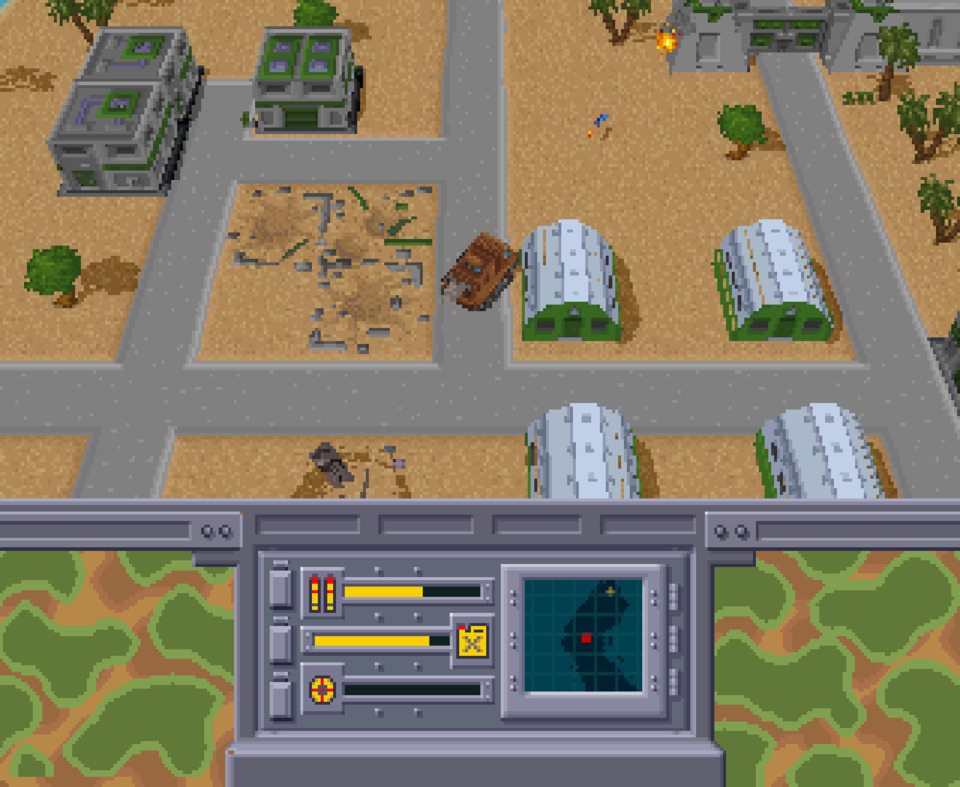
There are an ungodly number of missions across 18 difficulty levels. Completing one of the missions on a level unlocks the next level. The map size and amount of stuff to deal with increase at each level, but it's a slow ramp since there's 18 of the damn things. In each mission, you have four vehicle types to choose from: tank, missile artillery, helicopter, and jeep. The first two are useful for blowing stuff up, the heli is almost useless, and the jeep is needed to capture the flag. Even though there's tons of stuff to shoot, you only really need to kill the things that shoot at you in order to clear a path for the jeep, which is the only thing that can grab the flag. You get three lives per mission and can restore health at the home base at any time. There isn't much in the way of anything going on here, if you've played any mediocre top-down vehicle shooter in the last 30 years, then you've played this game. Maybe that's why it's important, since it might have informed that whole subgenre? I'm reaching, this thing is only notable for not being notable.
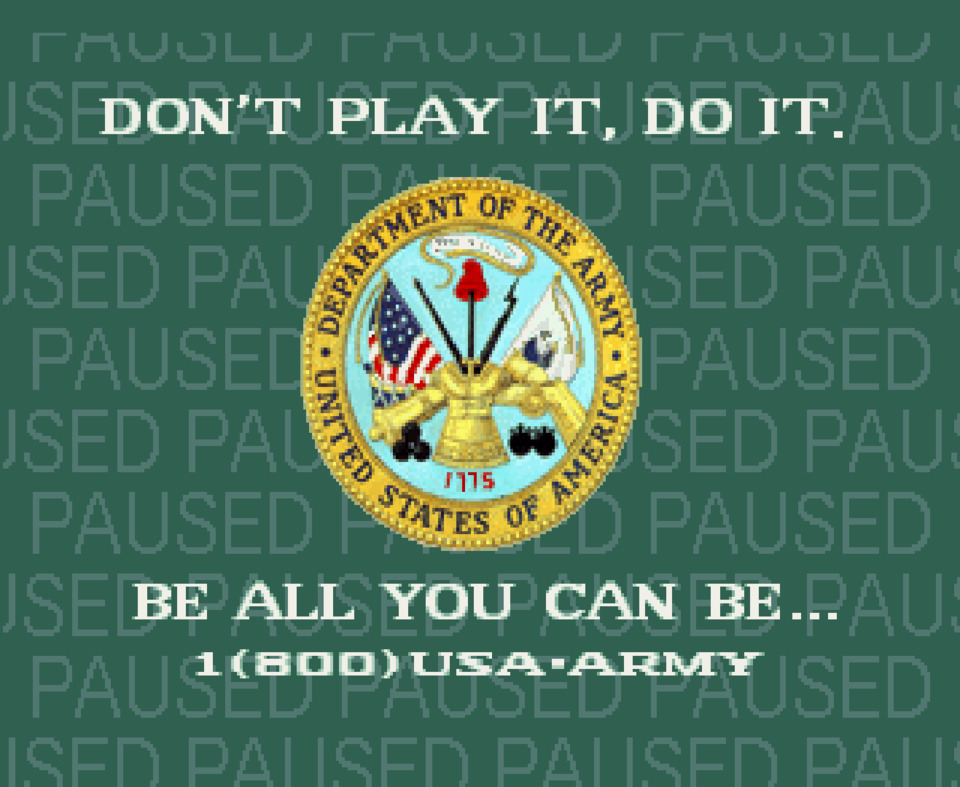
I've spent the last several days trying to get my head around why this game reviewed so well at the time, both on the 3DO and PS1. Though, I guess I haven't been trying that hard. Was it a fun co-op game? It couldn't have been for the production values, considering the way it looks, the obnoxious use of public domain music, and the low effort menus. Also, for some reason the same clip of Lou Gehrig plays after winning every mission. The gameplay isn't exactly engrossing either. In fact, I don't think I saw any written text other than map names in the entire time I played it. It's just a weird piece of crap.
----------------------------------------------------------------------------------------------------
Now that we have survived the latest bout of the 3DO's vengeance from beyond the grave, we get to move on to more updates of 3DO games. I promise, to myself more than you, that we will soon escape that system's death throes. Anyway, updating the Ranking of All PS1 Games feels kind of weird this week because of the presence of our first arcade compilation. I need to figure out how those fit in, but for now let's shove it onto the list with everything else.
1. Air Combat
…
15. Williams Arcade's Greatest Hits
43. Return Fire
49. PO'ed
69. Bottom of the 9th
…
81. World Cup Golf: Professional Edition
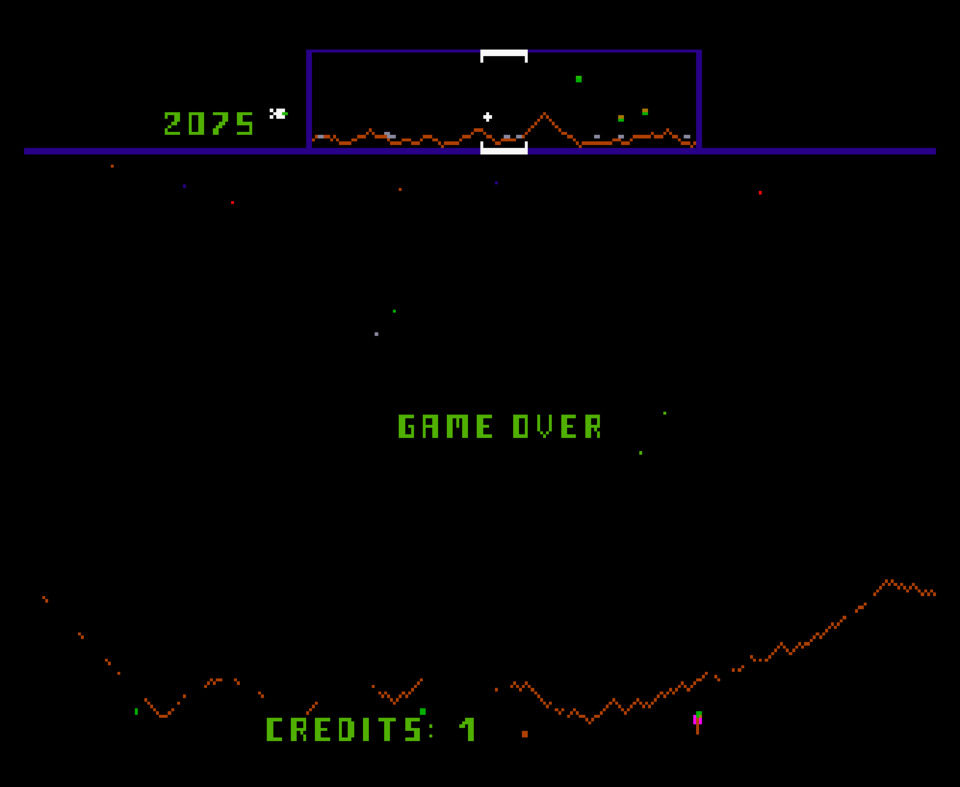
Next week, we'll finish out April and make it most of the way through May 1996 when we look at Hardball 5, Starblade Alpha, Slam 'n' Jam featuring Magic and Kareem, and Skeleton Warriors.
----------------------------------------------------------------------------------------------------
I streamed these games over on my Twitch channel at https://www.twitch.tv/fifthgenerationgaming. You can watch the archive below.
Log in to comment